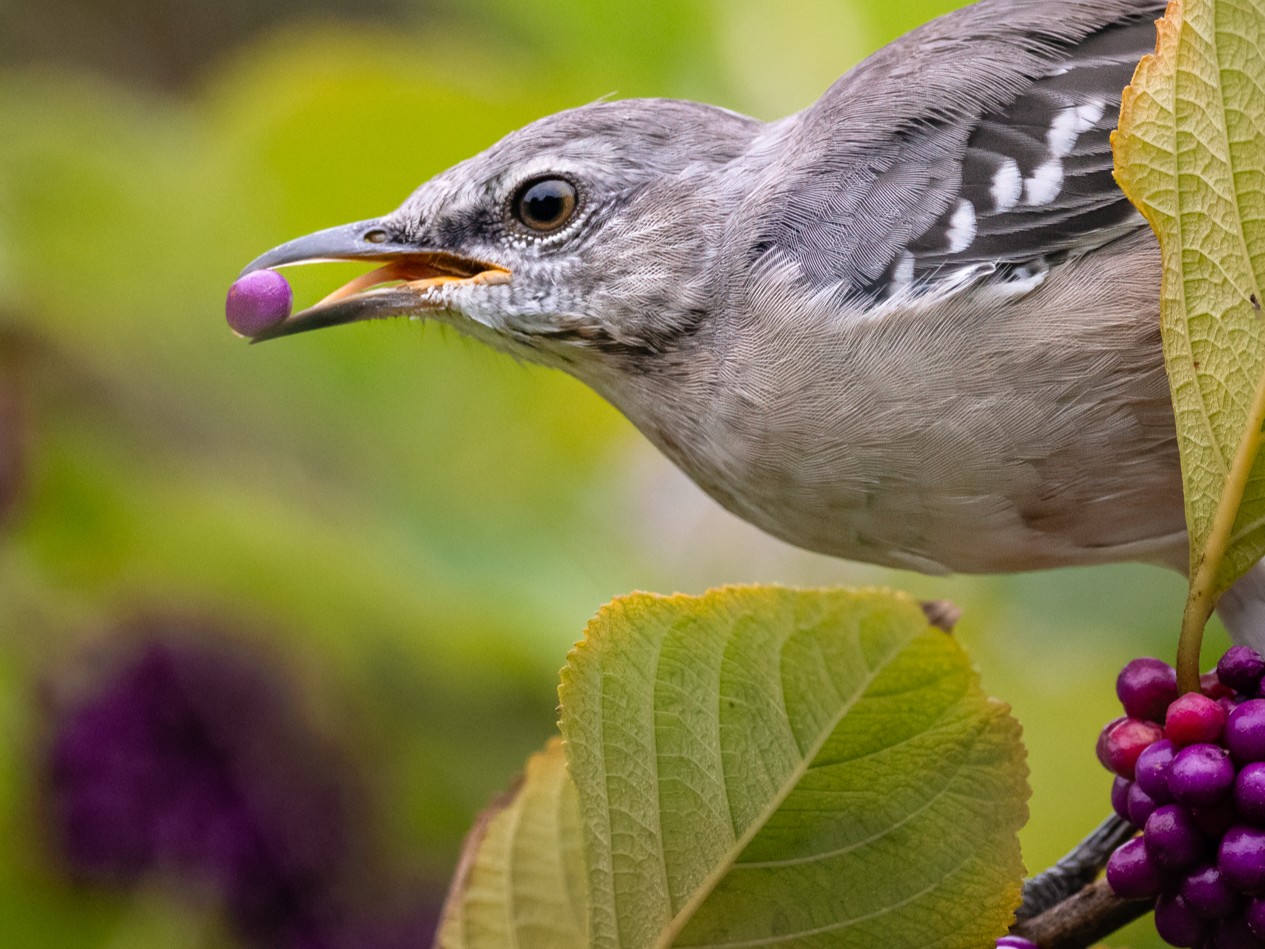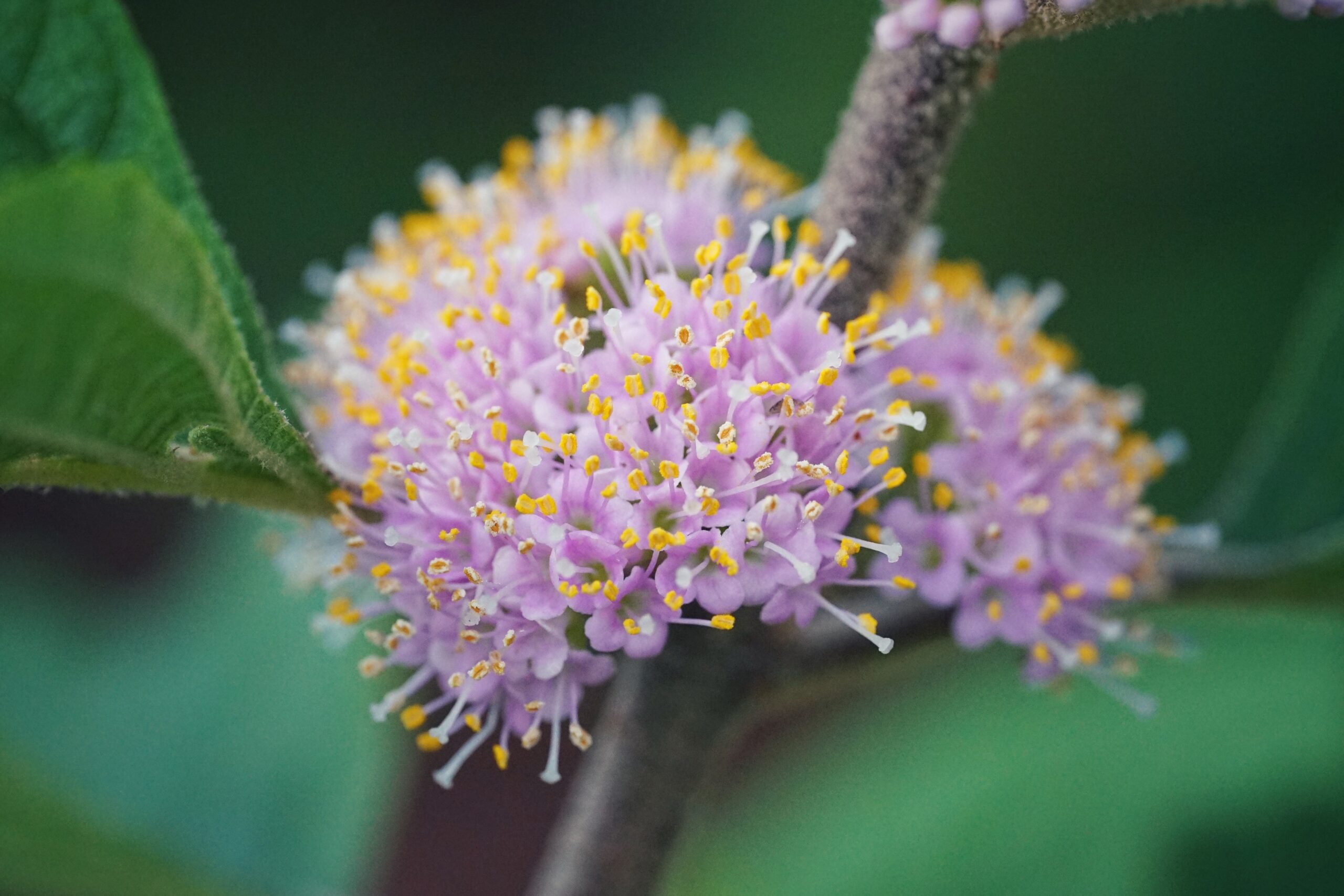American beautyberry
Pictured above: Mockingbird on American beautyberry (Callicarpa americana) by Jensen Bell. Click on terms for botanical definitions. View post as a PDF.
Also known as French mulberry, American beautyberry (Callicarpa americana) is a woody shrub found in pinelands and hammocks throughout Florida. The plant’s foliage offers cover for small wildlife. Its flowers are a nectar source for butterflies and bees, while its dense clusters of berries provide food for birds and deer from late summer into winter.
Flowers are small, may be pink, lavender or white and emerge from leaf axils in late spring and early summer. Leaves are ovate to elliptic and petiolate with finely toothed margins, prominent pinnate venation and a rough surface. They are oppositely arranged and are aromatic when crushed. Fruits are small (¼– ½” in diameter), magenta drupes that are born in dense, conspicuous clusters along the branches. Stems are square. Branches are loose and arching with grayish-brown bark.
The genus Callicarpa is from the Greek calli, meaning “beauty,” and karpos, meaning “fruit.”
The fruits are edible to humans, but have an astringent quality and not much flavor, making them somewhat unpalatable raw. Beautyberry jelly, however, is quite tasty. The leaves contain a chemical (callicarpenal) that may repel mosquitoes. Gently crush the leaf and rub it against the skin to release the chemical.
Family: Lamiaceae (Mint family)
Native range: Throughout Florida
To see where natural populations of American beautyberry have been vouchered, visit florida.plantatlas.usf.edu.
Lifespan: Perennial
Soil: Dry to moist, well-drained sandy or calcareous soils
Exposure: Full sun to partial shade
Growth habit: 3–8’ tall, up to 6’ spread
Propagation: Cuttings, seed
Florida regions of landscape suitability: North, Central, South
Garden tips: American beautyberry is known for (and easily identified by) its prolific fruit production. It is adaptable to a variety of conditions, but will flower and fruit more in full sun. The plant is generally deciduous, but may be evergreen in South Florida. Pruning in late winter is recommended to encourage denser growth.
American beautyberry is available from nurseries that specialize in Florida native plants. Visit www.PlantRealFlorida.org to find a nursery in your area.
Learn more about American beautyberry from the Florida Native Plant Society and the Institute for Regional Conservation.


